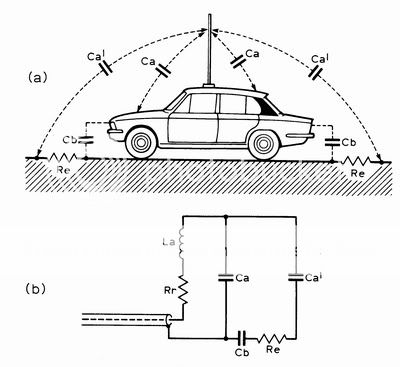Marconi, Cody was talking about efficiency, a full 1/4WL antenna can be near 100% efficient, that is, 100W into the antenna is 100W radiated from the antenna, no heating due to loading, a shortened vertical is less efficient, if we continue to reduce the antenna length, and increase the loading then it again becomes less efficient. It's a problem faced by many amateurs, but not necessarily most CBers, and it's especially affects anyone that works mobile, even then most CBers aren't prepared to use a 1/4WL antennas and rely on loading of some sort, vis a vis less than 100% efficient.
Currently ALL of my radio time is mobile, be that in my car or on foot, and as a result I see on a daily basis the affects of terrain, specifically terrain in the Fresnel zone, sometimes hundreds of wavelengths away from me. Here's a typical situation where terrain works in my favour; I was driving home from work one evening working DX on the 17m amateur band and there was an Alaskan station running quite a big pile up, remember I'm using a short antenna, a screwdriver antenna around 7' total length on the roof of my car, so it isn't 100% efficient, I don't know the percentage efficiency, but let's say 50%, my 100W in would be 50W ERP, I've lost 3dB already, so I'm using a negative gain antenna, let us say -3dBd gain. If we then consider the pile up this station was running, there were hundreds of people calling him across the globe, many probably using much more power than me, many using much bigger, high gain antennas than me, how could my -3dBd ever possibly compete with these signals? Simple, terrain, using the terrain to enhance my signal, increasing the low angle gain, just imagine if I could focus my 50W ERP onto the horizon, a really low angle, then I'd stand a chance.
Now I know the journey home from work, and I know whereabouts my signal gets this gain, and in which direction it favours, I needed a hill with the ground sloping down away from me to the North, there's only two places this happens on my journey home (60 mile drive), but I kept trying to work him for around 20 minutes until I reached one of these locations, and for 20 minutes he replied to everyone except me, if there was ever going to be a chance he would hear me, it was going to at this particular point in the journey, anyway, the upshot is he is now in my log

This is down to luck, time of day etc but we can't ignore the effect of terrain. I know a lot of guys in the UK like to go mobile on the top of a high hill and work the DX, many CBers do this, yet don't fully understand why being on a high hill makes it easier to work the DX, it's obvious to them why it increases the distance line of sight, and why they can work stations in different counties maybe up to 70 miles away or more, but it's the ability to punch their signal to the other side of the World that excites them.
Hope this makes sense and gives you an idea what I'm talking about.
Edit: I've just reread your question and realise I didn't explain the Fresnel zone, however I see by your graphic that you've already googled the subject, however I'm using the Fresnel zone to add in phase reflections to my signal, thus reducing the radiation angle of my signal, the effects of theses zones, and their distance from the antenna affect the signal differently, if I want to reduce the angle of radiation significantly then I'm relying on a Fresnal zone that is a significant distance from me, thousands of feet in fact.





